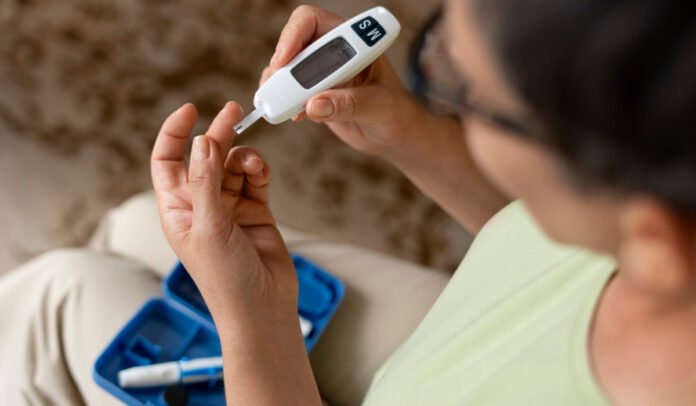Diabetes has long been regarded as one of the most stubborn chronic illnesses of modern times. Often described as a progressive disease, it is characterised by persistently high blood glucose levels caused by insulin resistance or insufficient insulin production. For decades, patients have been told that diabetes management is a lifelong commitment involving regular monitoring, medication, and lifestyle adjustments.
Yet in recent years, a new concept has stirred public interest — diabetes reversal. This idea has sparked both hope and scepticism, accompanied by numerous myths and misconceptions. Can diabetes truly be reversed? Or is it simply another way of describing effective management? In this feature, we unravel these questions, exploring both the myths and the scientifically grounded truths surrounding diabetes reversal.
But before tackling myths, it is essential to clarify what diabetes reversal actually means and how diet plays a pivotal role in the process.
What Is Diabetes Reversal?
The term reversal often leads to confusion. Diabetes reversal does not imply a permanent cure. Instead, it refers to achieving and maintaining normal blood glucose levels without medication, or with minimal reliance on it, usually through sustained lifestyle changes.
In essence, the body regains the ability to regulate blood sugar effectively — but the underlying condition still exists. Individuals who stop following healthy habits may see their diabetes return. Therefore, reversal should be seen as a phase of remission, not eradication.
The Role of Diet in Diabetes Reversal
Diet forms the foundation of any strategy to improve insulin sensitivity and reduce blood glucose fluctuations. A diabetes reversal diet typically focuses on nutrient-dense foods, portion control, and balanced macronutrients. The goal is to support weight loss, enhance insulin action, and avoid sudden spikes in blood sugar.
Here is an example of a carefully structured plan:
-
Breakfast: Scrambled eggs with spinach and tomatoes; a small bowl of mixed berries such as blueberries, raspberries, or strawberries; a slice of whole-grain toast or a small portion of steel-cut oats; accompanied by unsweetened green or herbal tea.
-
Mid-Morning Snack: Greek yoghurt with cinnamon and a few almonds or walnuts; or a small fruit like an apple.
-
Lunch: Grilled chicken or tofu salad with leafy greens, cucumbers, bell peppers, and avocado; dressed with olive oil and lemon juice. A small serving of quinoa or brown rice adds fibre-rich carbohydrates.
-
Afternoon Snack: Carrot or cucumber sticks with hummus; or a handful of unsalted nuts.
-
Dinner: Baked salmon or plant-based protein like lentils; roasted seasonal vegetables such as broccoli or cauliflower; and a side of sweet potato or cauliflower rice.
-
Evening Snack (if required): Low-fat cottage cheese with cherry tomatoes.
Accompanying this plan are important lifestyle principles:
-
Control portions to maintain a calorie deficit where necessary.
-
Avoid sugary drinks and processed foods.
-
Spread carbohydrate intake evenly throughout the day.
-
Choose healthy fats such as avocados, nuts, and olive oil.
-
Exercise regularly to enhance insulin sensitivity.
-
Practise mindful eating to reduce emotional overeating.
Myth vs Truth: Breaking Down Common Beliefs
Myth 1: Diabetes can be completely cured, and medications can be stopped forever.
Truth: Reversal is not the same as a cure. Some individuals achieve near-normal blood sugar without medication, but the risk of relapse remains. Ongoing monitoring and healthy living are essential.
Myth 2: Only type 2 diabetes can be reversed.
Truth: Type 2 diabetes, often linked to lifestyle, is more responsive to reversal strategies. Type 1 diabetes, an autoimmune disorder where the pancreas stops producing insulin, cannot be reversed, though lifestyle changes improve overall control.
Myth 3: Reversal demands extreme dieting and punishing exercise.
Truth: Balance, not extremity, is the key. Moderate, sustainable changes such as brisk walking and whole-food diets are more effective long term than fad diets or gruelling exercise regimens.
Myth 4: Reversal is possible for everyone.
Truth: Outcomes vary. Factors include how long a person has had diabetes, family history, and individual metabolic response. Some people achieve remission; others experience significant but partial improvements.
Myth 5: Reversal eliminates the risk of complications.
Truth: Maintaining remission reduces risks, but regular check-ups remain vital. Neglecting lifestyle measures can bring back elevated sugar levels and complications.
Myth 6: Herbal supplements can reverse diabetes.
Truth: Certain herbal remedies may support glucose control, but they cannot substitute for evidence-based management. Most lack robust clinical validation. Always consult a medical professional before using them.
Organic Produce, No Organic Profits
In the hills of India, particularly in states like Uttarakhand, farmers often produce fruits and vegetables that are naturally organic, simply because they do not use chemical fertilisers or pesticides. Yet these small farmers rarely benefit from the lucrative organic tag.
Large companies, aided by certification and marketing strategies, make significant profits by selling organic-labelled produce in urban markets. By contrast, the farmers themselves are often unaware of certification processes under schemes such as PGS-India (Participatory Guarantee System). They may sell their produce at ordinary rates, losing out on the premium that urban consumers willingly pay.
This disparity underscores the urgent need for awareness programmes and support to help farmers get proper certification, thus improving their livelihoods while making authentic organic food more accessible.
Diabetes Reversal and Exercise
While diet is crucial, physical activity plays an equally important role in diabetes reversal. Exercise enhances insulin sensitivity, helps reduce abdominal fat, and improves cardiovascular health. Activities need not be extreme; a brisk 30-minute walk five days a week, yoga, or moderate strength training can make a measurable difference.
Consistency matters more than intensity. Patients are encouraged to choose activities they enjoy, ensuring sustainability over years rather than weeks.
Why Reversal Is Not a Universal Experience
Not all individuals will achieve the same level of improvement. Diabetes duration is a major determinant — the earlier lifestyle changes begin, the higher the chances of remission. Age, genetic predisposition, and other health conditions also play significant roles.
For some, reversal means coming off medications entirely; for others, it may simply mean fewer medicines or lower dosages. Even in cases where full reversal is not possible, lifestyle interventions yield undeniable health benefits, reducing the risks of cardiovascular disease, kidney damage, and neuropathy.
Government and Healthcare Initiatives
Globally, health organisations have started acknowledging diabetes remission as an achievable goal. In the UK, for instance, the National Health Service (NHS) runs programmes focusing on intensive lifestyle interventions for type 2 diabetes patients. Similarly, in India, awareness campaigns and wellness clinics are increasingly focusing on holistic management, combining nutrition, exercise, and regular screenings.
Healthcare professionals stress individualised care. What works for one patient may not work for another. Hence, ongoing medical supervision is critical, particularly when adjusting medication levels.
Beyond Blood Sugar: The Psychological Dimension
Living with diabetes carries psychological burdens. Constant monitoring, dietary restrictions, and fear of complications often lead to stress or burnout. Reversal, even partial, can significantly boost morale, restoring a sense of control.
However, unrealistic expectations can lead to disappointment. Patients must understand that reversal is a spectrum, not an all-or-nothing goal. Mental health support, counselling, and diabetes education programmes are therefore as important as dietary or medical interventions.
Conclusion: A Lifelong Commitment
Diabetes reversal is not a miracle cure but a promising possibility rooted in science. For many, lifestyle modifications can bring blood glucose to near-normal levels, reduce medication dependence, and improve quality of life. Yet the journey requires persistence, realistic expectations, and regular medical guidance.
The central truth is this: diabetes management, whether aiming for reversal or not, is a lifelong commitment. Success lies in cultivating sustainable habits — balanced nutrition, physical activity, stress management, and regular medical check-ups.
For those living with diabetes, the message is one of cautious optimism. The path to reversal may not be available to everyone, but adopting healthy practices benefits everyone. Ultimately, it is not about curing diabetes but about living fully and healthily despite it.




















